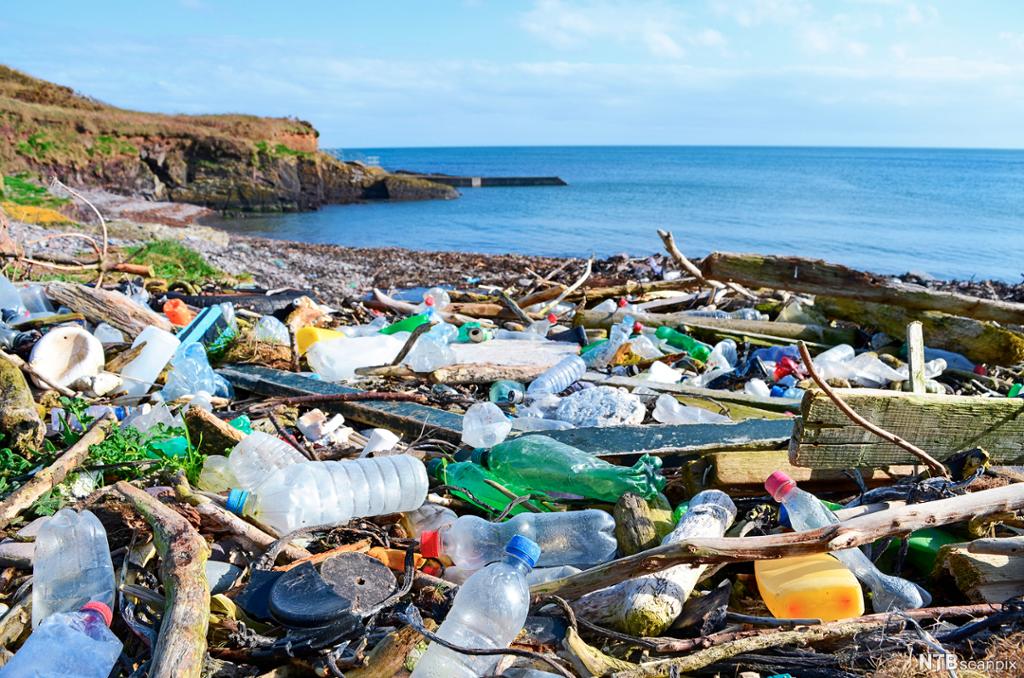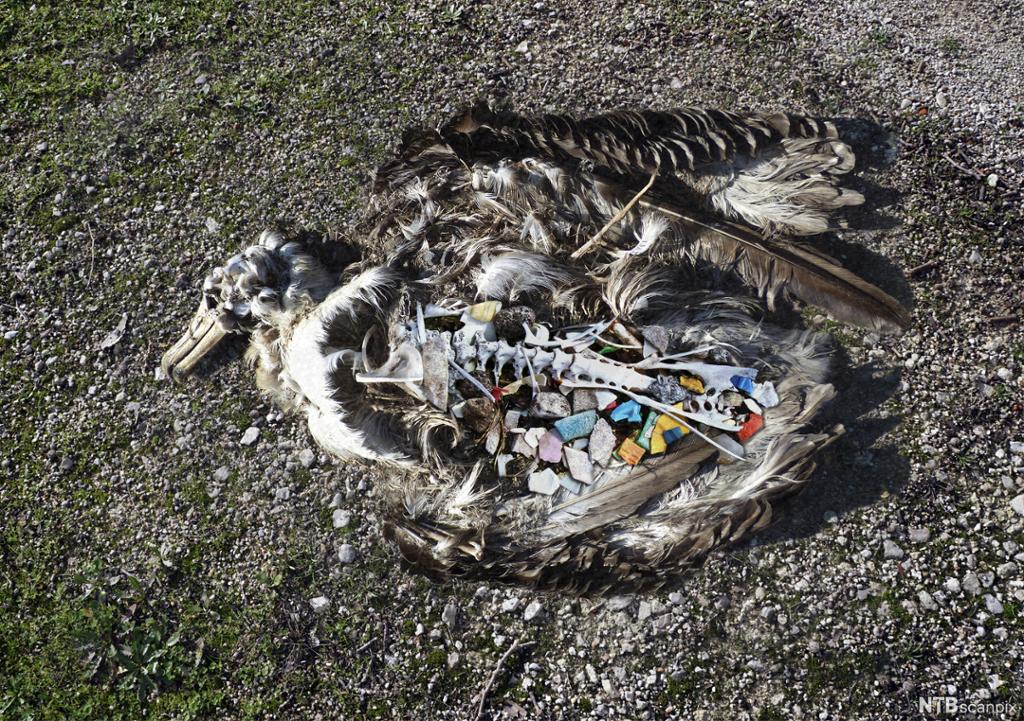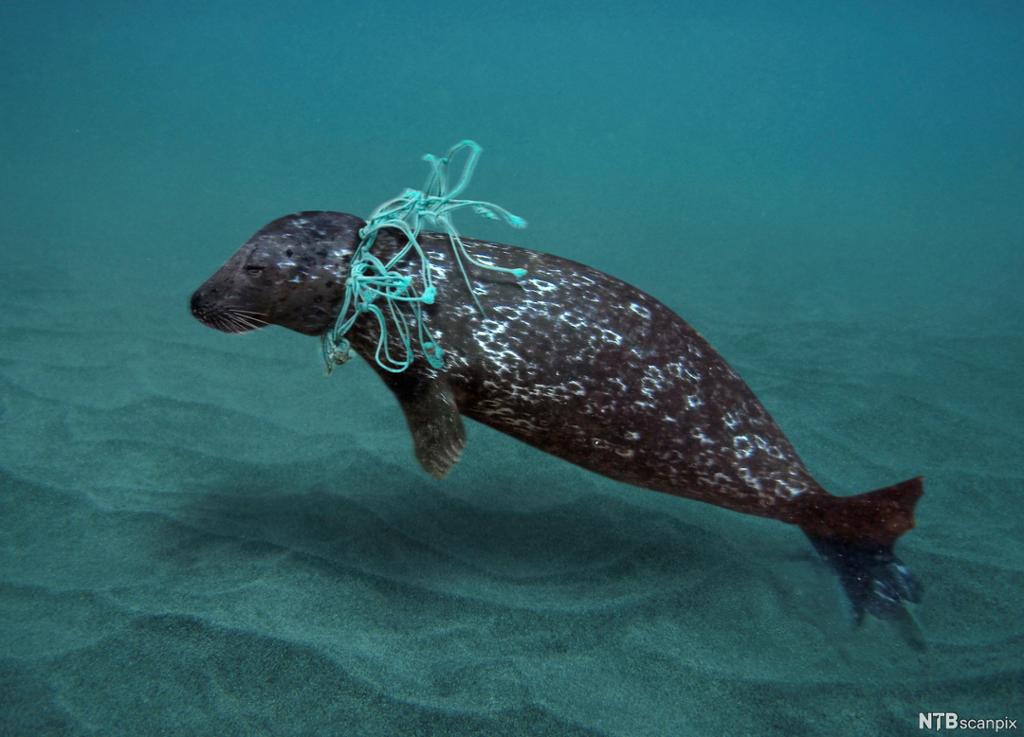Marine plastics
Before you read, watch the short film The Beauty which explores the topic of plastic pollution.
Our society is characterised by consumerism, over-consumption and a ‘use-and-throw-away’ attitude, and plastic clearly plays an important role in this equation. The production of plastics exploded in the 1950s and 60s, with new consumer products that were designed to be disposable, such as plastic cutlery, plastic cups, plastic straws and many other everyday products. In 1950 the world produced 1.5 million metric tonnes of plastic; by 2018, production had risen to a staggering 359 million metric tonnes. This increase in production and use of plastic products has resulted in a corresponding increase in plastic pollution. Its durability and resistance to degradation allows plastics to persist in nature for a very long time. For example, it takes 450 years for a plastic bottle to decompose in a landfill.
As a consequence of this mass consumption and waste of plastics, we are seeing a rapid deterioration in the health of the environment, especially the world’s great oceans. Every year about eight million metric tonnes of plastic enter the oceans, which is equal to a garbage truck full of plastic being dumped into the ocean every single minute. If business continues as usual, by 2050 we will have more plastic in the ocean than fish. Our addiction to plastic and waste mismanagement strongly affect everything living in the sea, killing millions of fish, mammals and birds every single year. Humans are at the top of the food chain, so whatever affects what we eat will sooner or later affect us as well.

Tens of thousands of sea animals are killed every year due to plastic litter, which they mistake for food. According to National Geographic, today we can find plastic trash in nearly 90% of all seabirds, and the numbers are growing rapidly as global production of plastic increases. We find the same problem in larger fish, seals, turtles and whales. Plastic cannot be digested by animals, so it stays in the gut, leading to a slow and painful death.

Whales are among the animals that suffer greatly. In 2017 a whale with large quantities of small plastic pieces, candy wrappers, plastic bread bags and 30 plastic bags in its stomach was found off the Western coast of Norway. In December 2019, a juvenile male sperm whale was found on a beach in Scotland filled with 220 pounds worth of plastic bags, tubing, gloves, bundles of rope, netting, and cups. And this is just the tip of the iceberg - the number of whales that are found with synthetic materials in their guts increases every year.
Getting entangled in marine debris is another global problem that affects a large number of marine species. Prior to the 1950s much of the fishing gear was made of biodegradable products, such as hemp, that break down quickly in a marine environment. Today, however, most fishing gear is made of plastic and synthetic material. This creates a problem for many marine species such as seals, sea birds and turtles, which are entangled in lost or abandoned fishing gear, so-called ghost nets. Entanglement can be very painful for the animal, and it often results in decreased swimming ability, life-threatening injuries, and death.
Microplastics are small plastic pieces less than five millimetres long. They come partly from larger debris that, when exposed to wind, waves, sunlight and heat, degrades into smaller and smaller pieces until they are so small that they can barely be detected by the human eye. Microplastics can also be tiny plastic particles that are used to improve various everyday products. Did you know, for example, that every time you wash your synthetic gym clothes more than 1900 pieces of microplastics are released into the water? Or that many cosmetic products, toothpastes, tea bags and chewing gums contain microplastics? As this is released into the oceans, it is ingested by fish and shellfish, which we in turn eat. Scientists have found microplastics in 114 different aquatic species, half of which end up on our dinner plates.
We know that microplastics damage aquatic creatures, as the particles can block digestive tracts, alter feeding behaviour and diminish the urge to eat. The result is reduced growth and lower reproductive output. But how do microplastics affect humans? According to a 2019 study conducted by the World Wildlife Fund, the average human swallows around 2000 pieces of microplastic weekly, and microplastics have also been found in all human organs. However, scientists are still trying to find out to what extent microplastics pose a threat to human health. There is speculation as to whether microplastics could be linked to cancer, weakened immune system, and reproductive problems, but research on this topic is so far too limited to be conclusive.
Go back to the pre-reading activity. Can you still remember the meaning of the words? Work with a partner.
Related content
